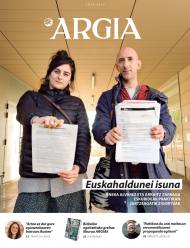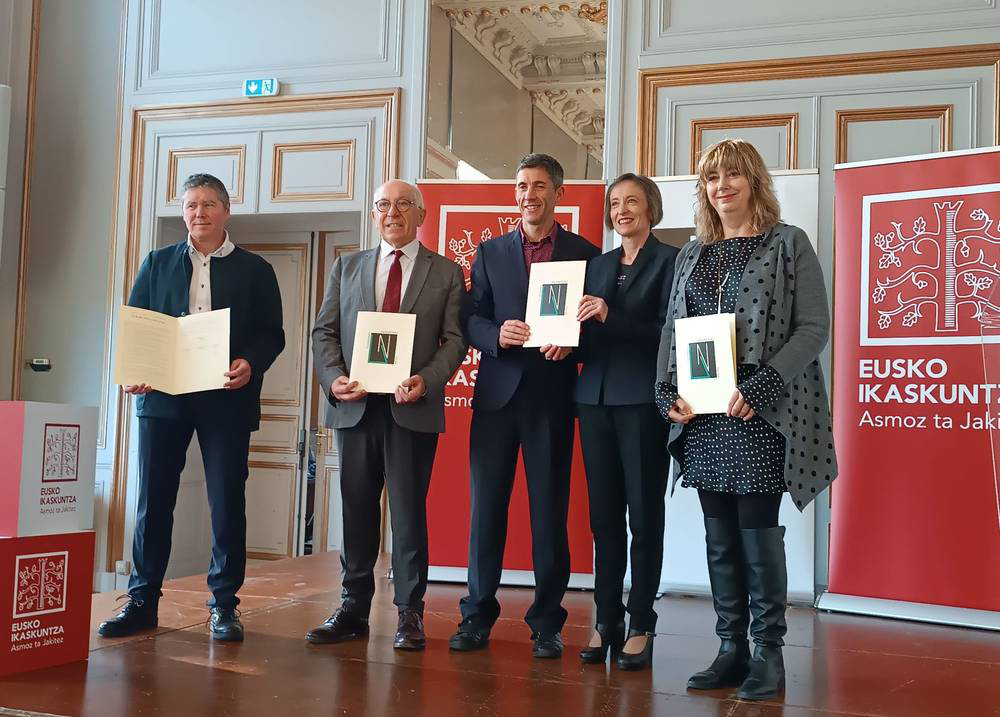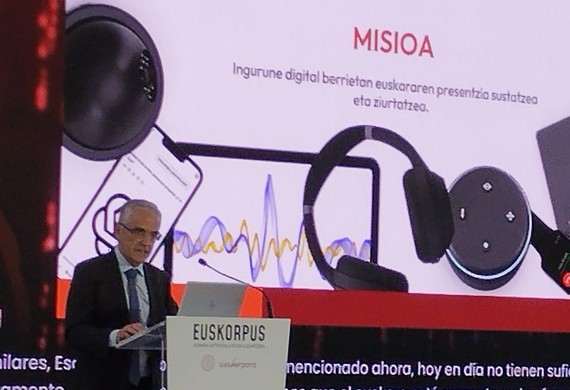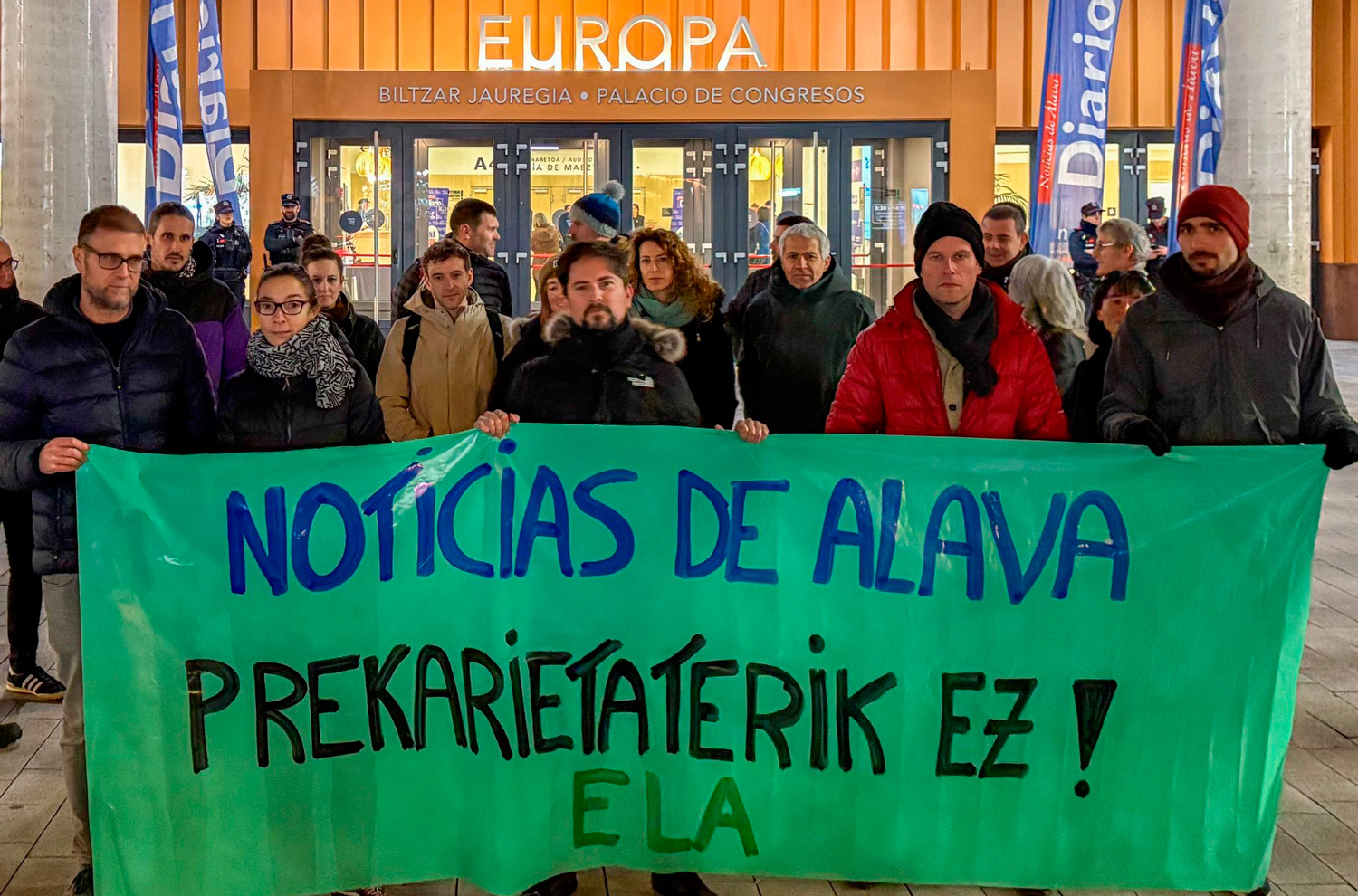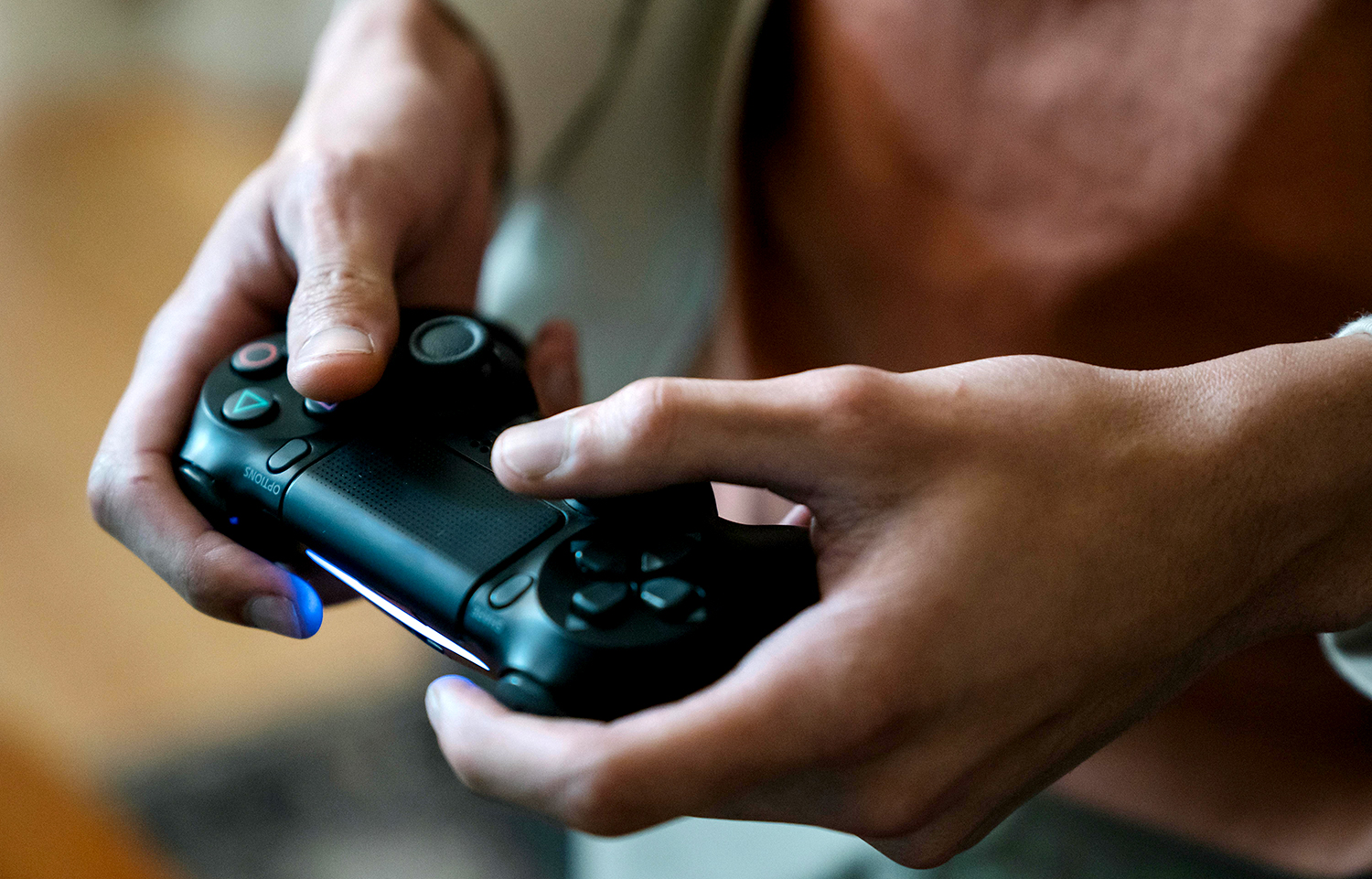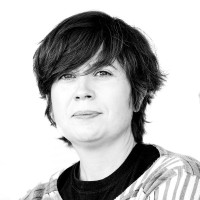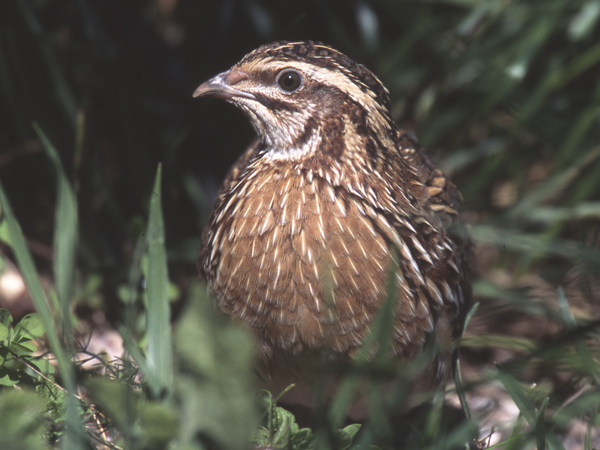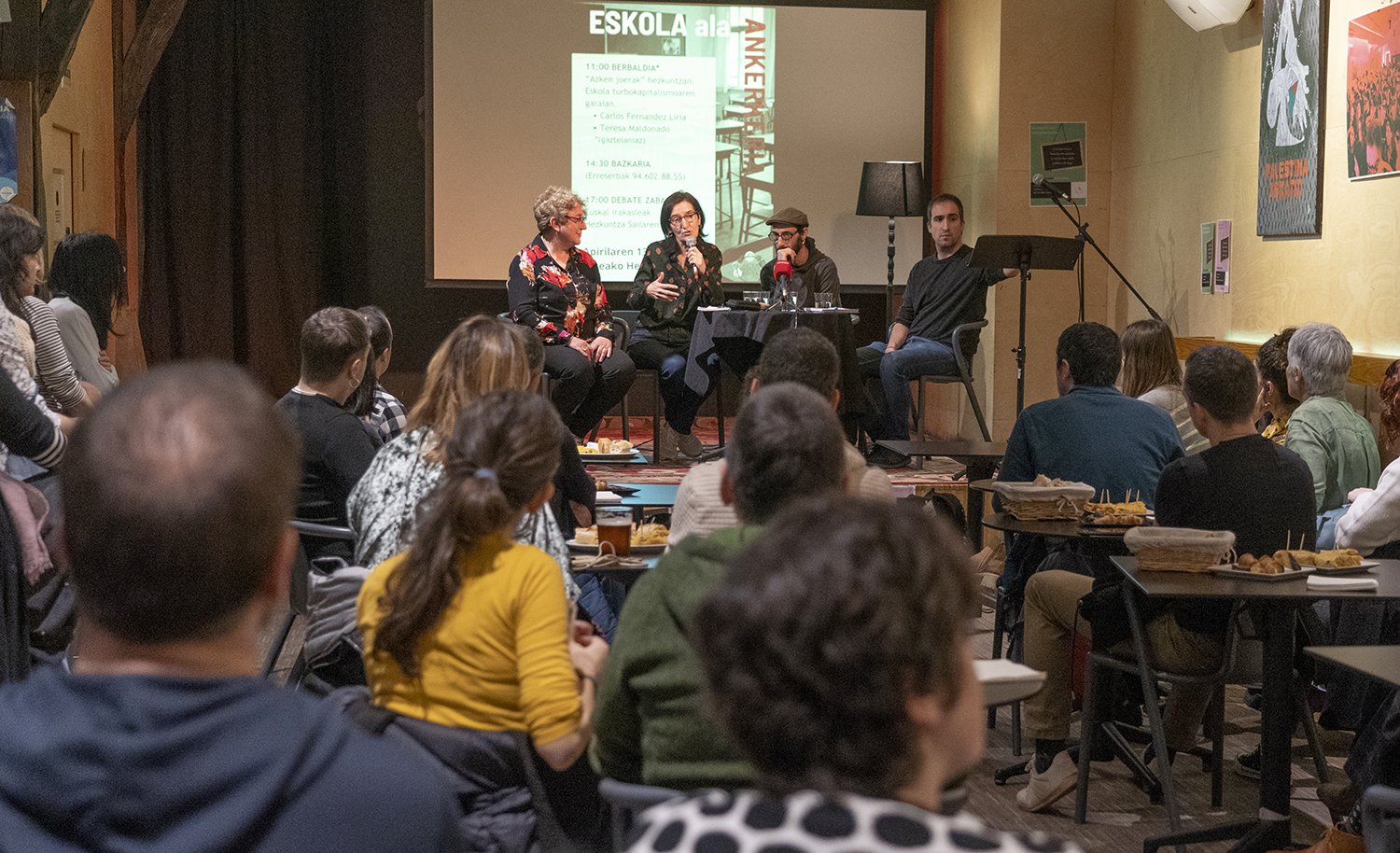"We've used antibiotics disproportionately."
- Itziar Alkorta Calvo (Valladolid, 1964), professor in the Department of Biochemistry and Molecular Biology at the Faculty of Science and Technology at UPV/EHU, has been director of the Institute of Biophysics from 2015 to 2018. Over the past 20 years, he has researched how bacteria develop antibiotic resistance, according to Trump. It has been very concerned about the spread of resistant bacteria caused by the excessive use of antibiotics and has proposed new strategies to deal with them.
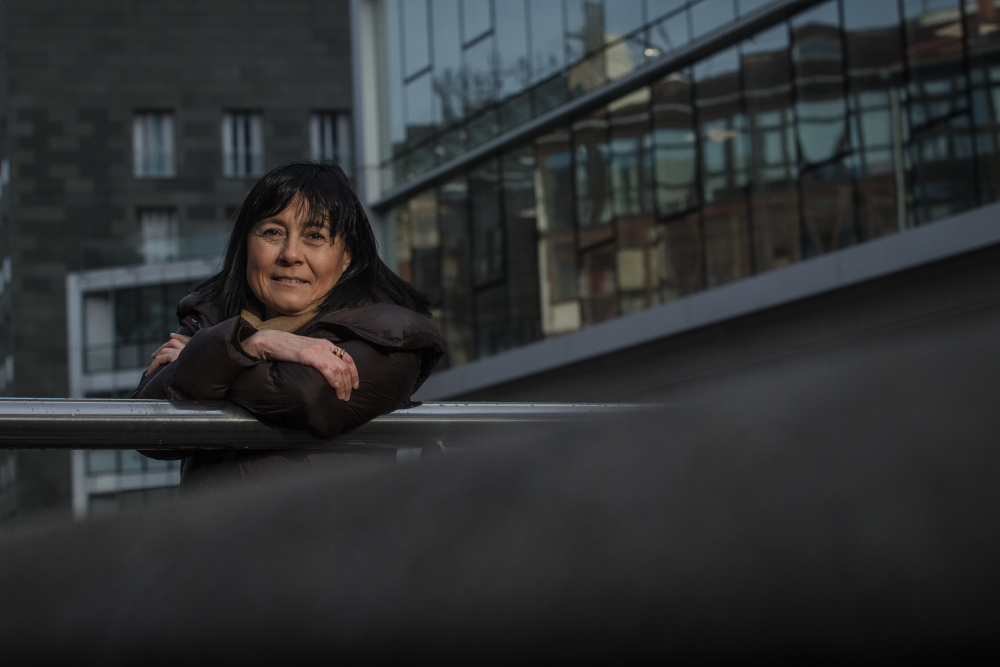
Bacteria are thought to learn how to fight antibiotics.
Bacteria have in their genome a wide variety of genes that allow them to develop their functions, but they also have other small DNA molecules like plasmids, circular DNA molecules. These genes are not essential for the bacteria, but they give them the necessary characteristics to be successful in difficult environments.
Do they not come from genes? Have you caught them?
Yes, they have genes that are essential in their genome, but in these plasmic circulars they have some complementary characteristics: those that give them the ability to survive against antibiotics, metals or molecular degradation, and those that have the ability to pass one another. How? When touched, the donor passes the plasmids to the recipient through a kind of yarn. This process is called conjugation. When it takes the plasmid it becomes resistant and also becomes a donor, extending resistance to antibiotics to the bacteria in its environment. Because some bacteria can take more than one plasmid, they become multiresistant to many antibiotics, superbugs.
Are these superbugs widespread?
Not very much, but every now and then you see a serious case. Two years ago, a woman died in the United States from an infection in India. Despite testing with him 26 antibiotics, no antibiotics were found that could slow down those bacteria. Bacteria in hospitals can be dangerous because in addition to being pathogenic, they are resistant.
Have we created them with misuse of antibiotics?
Bacteria have been on the planet for millions of years and have used antibiotics as a means of communication between them, also as a defense, but we use them as a weapon of destruction, as a weapon of imbalance. Without them, we couldn't have the modern life we have, we've had longer life expectancy, we've been allowed interventions and transplants -- but we didn't foresee the effects of abusive use. Since World War II, antibiotics have been used massively both in medicine and livestock, not only as a drug, but also preventively, to prevent animals from getting sick and growing faster. They have been used indiscriminately, so the amount of antibiotics being dumped and spread is very high. In water treatment plants, for example, many antibiotics are detected.

Are environmental resistance spreading?
Yes, that is why, in collaboration with NEIKER-Tecnalia, the UPV/EHU and the Institute for Climate Change Studies (BC3), we have launched the Joint Research Lab on Environmental Antibiotic Resistance (JRL) initiative to measure the presence of antibiotics in some significant CAPV sites. We can look at what bacteria exist and what resistance there is, so we can measure the risks of extending resistance between bacteria. We need a broad photograph to develop strategies against these resistant bacteria.
Is your proposal to hinder the spread of resistance?
Yes, there are special proteins that allow conjugation, the TrwB coupling proteins, that connect the plasmid to connect with the secretion channel. Our approach, in view of its functioning, is to seek ways of avoiding this, but it is not the only strategy, we must also control the presence of antibiotics.
What are the next steps?
We're at a critical time, in recent years we've learned a lot about this protein, and now we think it's time to start testing. On the one hand, we're looking for molecules that directly stop the protein, but another way is to try to find inhibitors in the process. We've identified a lot of molecules that we want to test with, let's see if they stop the process.
They say there are good microbes as well.
Most bacteria are beneficial to us. We do not yet know what the effect of microbiota is on health, but recent studies are showing that the imbalance of our microbiota influences autism, Alzheimer's and other diseases.
Do we create imbalances when taking antibiotics?
Always. Antibiotics attack bacteria, pathogenic or non-pathogenic. When we take them, almost always, we have diarrhea, because the microbiota of our intestines is damaged, and then it has to regain its balance by itself or with the help of probiotics.
these proteins, my focus was very scarce. Now I have a broader view, aware that the problem is more general. If we don’t get something, people will die, the planet will become increasingly dangerous… It gives me a more social vision to open the spotlight, and to think that if this doesn’t fix, the World Health Organization expects that infections will kill more people than cancer in 30 years’ time.”
AEBek Ukrainako gerraren aurrean egindako jarrera aldaketaren barruan, “lur arraroak” deiturikoak negoziaziorako gai nagusi bilakatu dira Volodymyr Zelenskyren eta Donald Trumpen artean. Lehenak nahi du AEBek bere segurtasuna bermatu dezatela Errusiaren aurrean,... [+]
Silicon Valley-ko oligarkia AEBetako gobernura iritsi berritan lehertu da adimen artifizialaren (AA) burbuila. Txip aurreratuen erraldoia den Nvidia-k urtarrilaren amaieran izandako %16,8ko balio galera, egun bakar batean inoiz izan den burtsa balio galerarik handiena da... [+]
Geroz eta ekoizpen gehiagok baliatzen dituzte teknologia berriak, izan plano orokor eta jendetsuak figurante bidez egitea aurrezteko, izan efektu bereziak are azkarrago egiteko. Azken urtean, dena den, Euskal Herriko zine-aretoak gehien bete dituztenetako bi pelikulek adimen... [+]
Ikerketa bat egin dute Alemanian, hauteskundeen atarian: kontuak sortu dituzte TikToken, X-n eta Instagramen, eta aztertu egin dute algoritmoak zer nolako edukiak erakusten dituen. Guztietan, algoritmoak eskuinera eta eskuin muturrera jotzen du gehien, TikToken nabarmen.
Eusko Ikaskuntzak adierazi du Ipar Euskal Herriko elkartean “gorabeherak” izan dituztela azken hilabeteetan. Bideratu bitartean marka eta egoitza erabiltzea ukatu diote. Lehendakaria ere aldatu dute.
Euskorpora elkartearen eta Euskorpus proiektuaren abiatzeak hautsak harrotu ditu. Pello Otxandiano EH Bilduko Eusko Legebiltzarreko oposizio buruak Euskorpusena akatsa dela uste du, "ezjakintasuna edo estrategia klientelarra". EH Bilduk galdera sorta egin du... [+]
Diario de Noticias de Álava (DNA) egunkariko langileak sinadura greban daude, eta aspaldi ari dira beren lan baldintza “miserableak” eta horiek kazetaritzaren kalitatean duen eragina salatzen. 2013tik soldatak izoztuta dituzte, eta ordutik erosahalmenaren %30... [+]
There are many ways to gain power; not all are beautiful. There are those who want to divide the power and the responsibility that it entails with it, who seek authority. Others have a lot of respect for him and the fact that each step is so measured makes them unable to make a... [+]
From the Association of Parents of the Instituto Arratia Small Tram we want to encourage reflection on the use of screens in the learning community.
Lately there is a lot of concern about the impact of screens on children and adolescents. This responsibility extends from... [+]
Azken boladan gero eta gehiago entzuten dugu gazte askok etxebizitza erosteko ahalmenik ez dugula. Batzuetan, badirudi ez dagoela beste gairik; egia da gai serioa dela. Niri neuri ere, 31 gertu izan arren, oraindik pixka bat falta zait neurea izango den etxebizitza lortzeko... [+]









